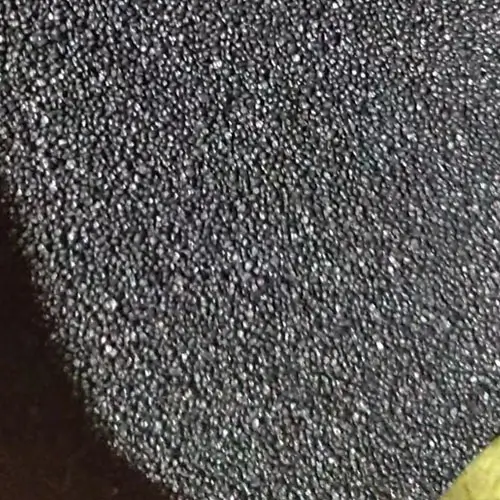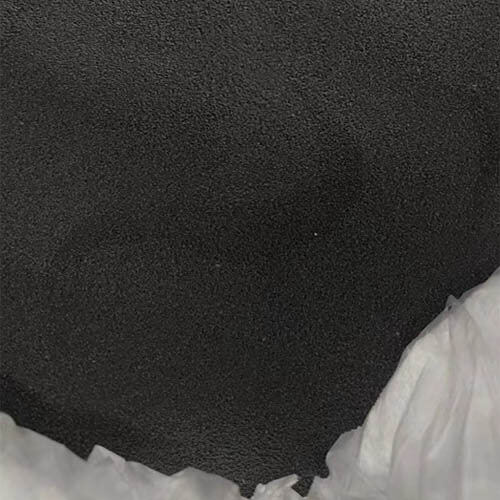As a indispensable refractory material, its strength characteristics are directly related to their quality and use of effectiveness. In many industrial fields, such as metallurgical, cement production, glass manufacturing and chemical industry, pouring materials played a pivotal role. Therefore, the research and development of high -performance watering is particularly important.
It is especially worth mentioning that aluminum -magnesium pouring is widely favored with its excellent high temperature stability and resistance to erosion. In high temperature equipment such as steel bag, RH refining furnace, cement kiln and glass kiln, we can often see it. It is worth mentioning that this kind of pouring can also effectively solid the harmful elements in solid -soluble steel residue, such as iron (FE) and manganese (MN), while its own structure is not damaged. When the active alumina and magnesium are used as raw materials, the hydration response of the two can promote each other and form a material with a microporous structure. This structure can eliminate the expansion caused by spinel production under high temperature conditions, thereby ensuring the stability of its volume.
In addition, the particle size distribution, particle appearance, and physical properties of the raw materials have a vital impact on the fluidity of the slurry, the molding of the body, and the performance after firing. In essence, refractory watering is a composite material composed of a fine powder matrix wrapped in large granules. In order to ensure its smooth molding, the materials need to show good liquidity and tactileness during the pouring process. After the maintenance and burning treatment, it must also meet the low pore rate and high -intensity requirements in a specific application environment.
However, the strength of refractory watering is not unchanged, and it is affected by many factors. This article will explore these factors to help everyone better understand and apply refractory pouring.
1.Use conditions
For most of the pouring, adding water to make it liquid is a vital step. It ensures that the pouring water can be formed smoothly. Before heating and solidification, the initial intensity of pouring depends on the complexity of hydration and dehydration. Therefore, water plays a dual role here: it is not only a necessary condition for the intensity of the binding agent, but also the key carrier of pouring.
Putting materials are usually sophisticated by a variety of components, which gives it a unique micro structure. It is worth noting that the physical and chemical properties are closely related to the environment and temperature.
The amount of water added is a parameter that requires precise control, which directly affects the construction performance, flow characteristics of the watering, and the mechanical properties after firing. If the amount of water is insufficient, the binding agent may not be fully hydrated, which will affect the liquidity of the slurry. On the contrary, excessive water will reduce the viscosity of watering, cause bias of aggregate, and even cause serious layers, which eventually leads to the unevenness of the internal structure.
In addition, during the baking and burning process, excessive water will generate a large amount of air holes inside the watering of the water with the evaporation of free water and the separation of water. These air holes will not only reduce the intensity of watering, but also weaken their ability to resist slag erosion. Therefore, under the premise of ensuring the watering requirements, the amount of water adds should be reduced to avoid explosion or excessive air holes during the heating process, so as to ensure the quality and use of the watering.

2.Raw materials and granules
During the preparation of watering, the addition of water is a vital link. It mainly occupies the gap between the particles to ensure the uniformity of the mixed and the liquidity of the construction. In order to optimize the efficiency of the use of water and meet the operating liquidity requirements at the same time, we use fine powder in the matrix to wrap the large granules, thereby increasing the spacing between thick particles and achieving the lubrication effect. This measure can also effectively adjust the accumulation density of the particles, which significantly improves the liquidity of pouring and effectively prevent the occurrence of bias.
When the water is added to the watering, we must overcome the Fan Dehua and capillary forces between fine powder to ensure the uniformity of mixed. This process has a decisive impact on the construction performance of the watering, so it can be said that the operating performance of the pouring materials depends to a large extent on the granularity of its dry powder. Although large particles are not as good as fine powder in lubrication and liquidity optimization, their cost advantages, the improvement of the mechanical properties of pouring after burning, and the reduction of the lower -temperature expansion of high temperature should not be ignored. In addition, the existence of aggregate also provides necessary channels for the evaporation of internal moisture, effectively avoiding the cracking and damage risk of products during heating and heating. Through these comprehensive measures, we can ensure that the pouring materials maintain excellent performance, but also maximize cost benefits and construction efficiency.
3.Use process
In the construction process of fire -resistant pouring, self -powdery phenomenon is a question that needs to be followed. This phenomenon is mainly caused by the hydrophilic products of calcium aluminate cement and acid gases in the atmosphere, such as CO2, SO2, H2S, etc., which occurred. Specifically, these acidic gas will have a chemical reaction with hydrophilic products, leading to a decomposition, which will significantly decrease the strength of wear -resistant pouring materials.
The main chemical reactions involved in the phenomenon of self -powder include carbonate reactions of aluminum cement, carbonate reactions between aluminum calcium and aluminum cement and aluminum, and reactions between aluminum -acid cement and sulfate. These reactions will gradually appear with the evaporation of water during the maintenance or natural drying process of pouring.
In addition, during the maintenance or natural drying stage, with the gradual evaporation of water, some soluble carbonate, phosphate, and sulfate salt will crystallize. Especially those salts containing crystal water will change crystal types during weathering or water loss. At the same time, with changes in volume, these factors will further exacerbate the strength loss of refractory pouring materials.
It is worth noting that there is also a type of salt that does not contain crystal water, which will not cause crystal changes and volume changes during the salt analysis process. The appearance quality.
4.Sintering process
In thick-grained watering, there is a difference in the contraction rate between thick particles during the sintering process, so it is easy to produce micro -cracks. The formation of this micro -crack is particularly common in pouring, and when we replace the medium -granular particles into coarse particles and fine particles, this situation will be more serious, resulting in further increase in the number of micro -cracks.
Taking the fire -resistant pouring materials as an example, the challenges they face are particularly severe. Considering that the temperature of the clinker exports is as high as about 1400 degrees Celsius, and the three wind temperatures entering the kiln fluctuate frequently due to the continuous changes in the kiln condition. In addition, the diameter of the modern kiln has gradually increased and the kiln speed continues to increase. The thermal stress and mechanical stress of pouring are significantly increased.
In view of the above factors, the fire -resistant pouring of the kiln must have excellent refractory, mechanical strength, thermal shock stability, and alkaline resistance to adapt to such a harsh working environment. Combined with the specific operating conditions and requirements of the kiln mouth, we recommend using high -performance refractory pouring materials designed for the kiln mouth or a special anti -refractory pouring material for the optimized mouth kiln. Such a choice can ensure the long -term stable operation of the kiln mouth, and it also helps improve the overall production efficiency.
The intensity of fire -resistant watering is affected by various factors, including the quality and proportion of raw materials, construction technology and maintenance conditions, sintering processes, and other factors. In order to obtain high -intensity refractory pouring materials, comprehensive consideration and optimization must be made from various aspects.

